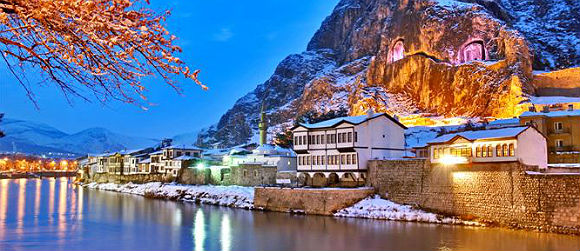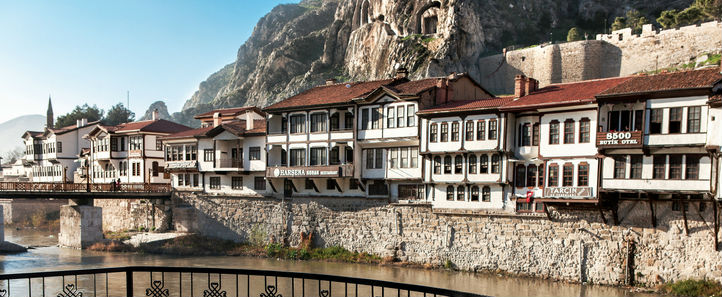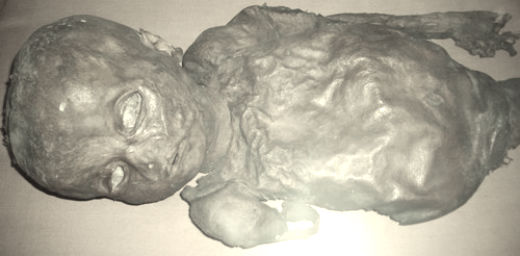From the slosh of the Yesihrmak gliding coyly between Amasya’s mansions redolent of wood, you might first think you are in a coastal town. Home to eleven different civilizations in the past, this river tow boasts a spectacular 9,000-year-old culture. Tf French traveler, G. Perrat, who visited the city in 1861, described it as the Oxford of Anatolia, comparison based on the fact that several Otto sultans spent their formative years as crown princes here, where they were trained in scienc and learning and the art of ruling.
A major portion of the books that earned Amasya the title ‘city of scholars’ are on display in the Amasya Beyazid Manuscripts Library. This venui which houses upwards of 7,000 manuscript work also boasts 7th century copies of the Holy Quran Anatolia’s first mental asylum to implement mush therapy is also in Amasya. Built in 1308, the Amc House of Healing was used as a hospital up to th 18th century.
As Sabuncuoglu Museum of the His of Medicine and Surgery today, it exhibits variou, instruments that were used in treatment. And did know that the the renowned ancient historian Stn whose statue you will see as you stroll on the ban of the Yesihrmak, was from Amasya?
VALLEY OF THE KINGS
Illuminated, the Royal Rock Tombs lend Amasya a majestic appearance. These ancient tombs large and small in the valley of the Yesilirmak number twenty-three. Some of the tombs, the largest of which is 15 meters high, are linked together by ancient passageways. After the rock tombs, our next stop is Harsena Castle. Close by this structure, noteworthy for its eight layers of defense walls, the Kizlar Palace was used as a women’s quarters in the period of the crown princes.
Another wonder carved in the rocks is Farhad Canal. Legend has it that Farhad, a famous artist in the time of the Persians, was in love with the sultan’s sister, Shirin. Loth to give his sister away, the sultan laid down the condition that Farhad drill through the mountains and bring water to the city. Although Farhad, spurred on by his love for Shirin, would meet the challenge, he lost his life nonetheless in a trap laid by the sultan.
The ancient waterway believed to have been laid by Ferhat is open to visitors, and the countdown has begun to the opening of the Farhad and Shirin Museum at the spot where the canal ends. Amasya tourism officials say the city is looking to host Valentine’s Day in 2014. Among their aims is that couples from all over the world will come to Amasya on February 14 to repeat their vows, and that a symbolic lock will be left in the city to represent each bond.
WORLD’S ONLY ISLAMIC MUMMIES
The Bayezid II Complex in Amasya, Land of Mosques, is reminiscent of a university campus. Adorned with foliage motifs, the pulpit of Mehmet Pasha Mosque is a rare example of Ottoman marble workmanship. The arched vault at Bayezid Pasha Mosque and the decorative woodwork at Abide Hatun Mosque in Merzifon are quite remarkable. Maden Mosque, a converted church in the villageofGiimus, is Amasyas Hagia Sophia. Noteworthy for its mosaics, this place of worship has been declared a mosque of tolerance in Greece. Amasyas museums are also well worth seeing. Welcoming some 500,000 visitors last year, the Amasya museums’new target is a million tourists a year. The city, which aims to become a center of cultural tourism in Anatolia, is gearing up for the future with the slogan, ‘Amasya For All Seasons’.
Amasya Museum, where upwards of24,000 items are on display, also boasts the only examples in the world of Muslim mummies. Sarayduzu Barracks, where the Amasya Circular, which laid the foundations for the Republic of Turkey, was drafted, has been converted into the Museum of the National Struggle. Turning now to the historic Amasya houses, some of these 285 officially registered dwellings have been converted into restaurants, hotels and museums. And now the city is going to be transformed into the Venice of Anatolia through a project to raise the water level of the Yesihrmak. Amasya is a candidate for becoming a tourism favorite in the near future, and its waiting for you.
CITY OF PRINCES
Long known as the city of princes where numerous men of state were groomed for the Ottoman palace, Amasya hosted exactly 12 of them. Five served as governor of Amasya province but never gained the throne. But Beyazid II (the Thunderbolt), Mehmed I, Murad II, Mehmet II (the Conqueror), Beyazid II, Murad III and Selim III (the Grim), all ruled the Ottoman Empire after serving as governor of Amasya. You can get detailed information about them by visiting The House of Princes Museum at Amasya.



